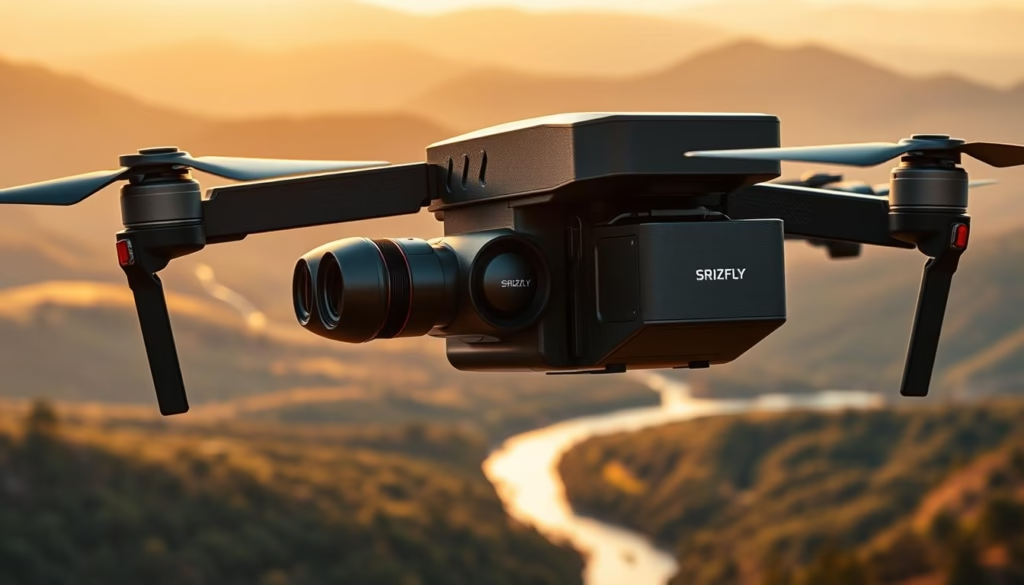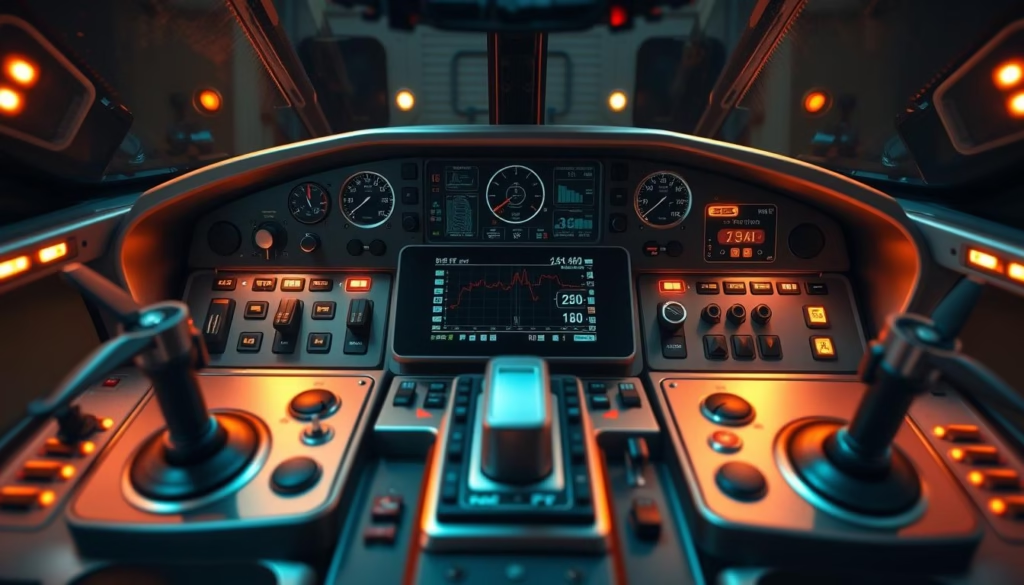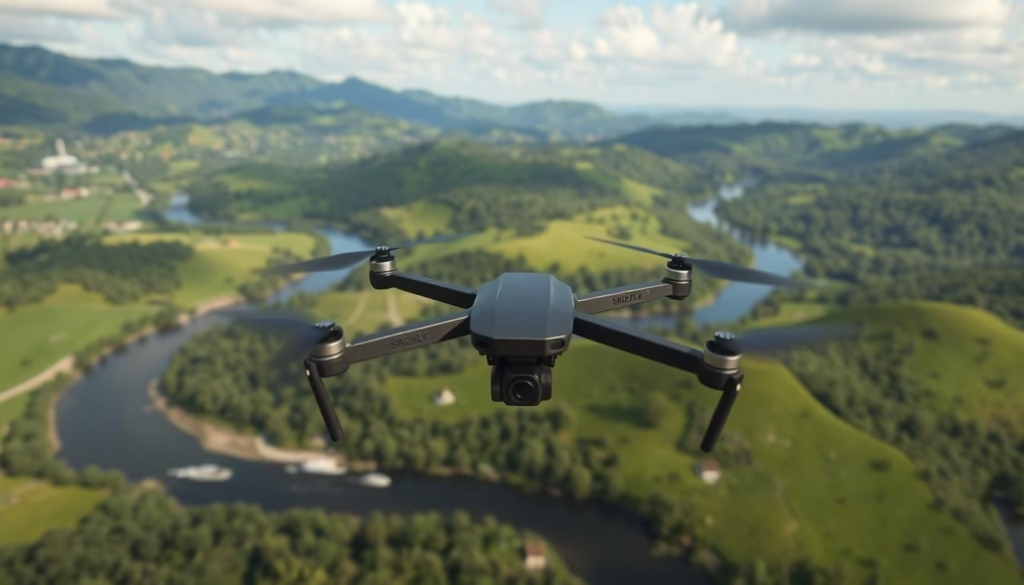Microsoft Flight Simulator puts players in the cockpit of a plane, offering a unique perspective from 35,000 feet in the air. The game’s sophisticated drone camera system allows for a fully independent camera that can be controlled separately from the airplane. This feature provides an immersive experience, closely mimicking real-world drone operation.
We will explore how this simulator can be used for real-world drone pilot training, providing a risk-free environment to develop essential skills. The high-fidelity graphics and realistic physics create an ideal training ground, allowing pilots to master complex drone maneuvers without damaging actual hardware.
Key Takeaways
- Microsoft Flight Simulator’s drone camera system offers a surprisingly effective platform for real-world drone pilot training.
- The simulator’s high-fidelity graphics and realistic physics create an immersive training environment.
- MSFS2020’s drone camera functionality can be leveraged as a cost-effective training solution.
- The comprehensive control system allows for mastering complex drone maneuvers without risk.
- Practical techniques can be learned to transfer virtual drone piloting skills to real-world applications.
Understanding MSFS 2020 Drone Camera Basics
The Microsoft Flight Simulator 2020 is not just for planes; it also features a drone camera mode that offers a realistic simulation experience. This feature is particularly useful for drone enthusiasts and professionals looking to hone their skills without the risks associated with real-world drone operation.
What Makes MSFS2020 Suitable for Drone Training
MSFS2020 provides an incredibly detailed world with realistic environments, making it an ideal platform for drone training simulation. The simulator’s photorealistic scenery and accurate weather systems create challenging and varied training scenarios.
Accessing the Drone Camera Mode
To access the Drone Camera, simply press Insert while the plane is stationary or on autopilot. Alternatively, you can click on “Camera” on the toolbar and use the Showcase tab to access Drone Controls
As quoted by a renowned drone expert, “The realism and flexibility of MSFS2020’s drone simulation make it an invaluable tool for training.” With MSFS2020, you can practice precise drone movements using Active Pause functionality, enhancing your overall aerial awareness.
Essential MSFS 2020 Drone Controls for Training
Mastering MSFS2020 drone controls is essential for effective real-world training. The simulator offers a range of controls that mirror those used in professional drone operations, allowing users to develop the skills needed for real-world flying.
Movement and Navigation Controls
Basic movement and navigation are controlled using the WASD keys for horizontal movement and the R/F keys for vertical movement. This setup helps build muscle memory that translates to actual drone controller operation. For instance, pressing W moves the drone forward, while F moves it down.
Camera Angle and Rotation Controls
The numpad keys are used to control camera angles and rotation. Functions include pitch (Num8/2), yaw (Num4/6), and roll (Num7/9), which are similar to those found in professional drone camera systems. For example, Num8 pitches the camera up, while Num4 yaws the camera left.
Speed and Zoom Adjustments
Drone translation and rotation speeds can be adjusted using the function keys. F5 and F6 decrease and increase drone translation speed, respectively, while F7 and F8 adjust the rotation speed. The zoom functionality is controlled using Num + and Num –, allowing for practice in framing shots at various distances.

- Master movement and navigation controls using WASD and R/F keys.
- Control camera angles and rotation with numpad keys.
- Adjust drone translation and rotation speeds using function keys.
- Practice zooming with Num + and Num – keys.
Advanced Drone Simulation Techniques
Advanced drone simulation techniques in MSFS2020 offer a realistic and immersive training experience. These techniques are designed to enhance your skills in operating drones for various professional applications.
Using Follow Mode for Dynamic Training
Using the Follow Mode, activated with the Tab key, you can practice dynamic tracking shots. This feature is particularly useful for capturing moving subjects like vehicles or athletes. By mastering Follow Mode, you’ll improve your ability to track targets smoothly.
Lock Mode and Target Tracking Practice
The Lock Mode, toggled with Ctrl + Tab, allows you to maintain focus on specific targets. This skill is essential for inspection work, search and rescue operations, and professional filming. Practice target selection using the target cycling commands: T for the next target and Shift + T for the previous target.
Simulating Real-World Drone Photography Scenarios
By combining MSFS2020’s diverse environments with drone camera techniques, you can simulate challenging real-world conditions. Use the C key to switch between controlling the aircraft and the drone camera, enhancing your multitasking abilities. Additionally, utilize MSFS2020’s attachment functions (Ctrl + Page Up/Down) to practice maintaining optimal distance from subjects.
Transferring MSFS 2020 Drone Skills to Real-World Flying
As we conclude our journey through MSFS2020 drone simulation, it’s clear that the skills you’ve developed are highly transferable to real-world drone operation. By mastering the drone camera controls and techniques in MSFS2020, you’ve built a strong foundation for capturing stunning real-world footage.
Using a joystick or Xbox controller with MSFS2020 enhances the realism of your training, allowing you to develop the muscle memory needed for smooth and precise drone movements. Practicing complex maneuvers in the simulator builds spatial awareness and camera control skills that significantly reduce the learning curve when operating actual drones.
Our structured approach helps you transition from keyboard commands to actual drone controller layouts, ensuring a seamless transition to real-world drone operation. By leveraging the pause functionality in MSFS2020, you can analyze your technique and improve decision-making, enhancing your real-world performance.
FAQ
How do I access the drone camera mode in the Microsoft Flight Simulator?
To access the drone camera mode, simply navigate to the camera options and select the drone camera. You can then control the camera using the designated keyboard controls.
What are the keyboard controls for adjusting the drone's rotation and translation speed?
You can adjust the drone’s rotation speed using the Num Roll, Num Pitch, and Num Yaw controls. For translation speed, use the Ctrl key in combination with the corresponding movement keys.
How do I toggle the drone's follow mode on and off?
To toggle the follow mode, press the designated keyboard shortcut. This allows you to dynamically track your target and practice real-world drone flying scenarios.
Can I adjust the drone's camera zoom and depth field?
Yes, you can adjust the camera zoom using the designated controls. Additionally, you can toggle the drone’s depth field to simulate real-world photography scenarios.
How do I lock onto a target using the drone's lock mode?
To activate the lock mode, simply press the corresponding keyboard control. This allows you to practice target tracking and tracking practice in a realistic simulation environment.
What is the purpose of the drone's auto mode, and how do I toggle it?
The drone’s auto mode allows for automated flight control. You can toggle this mode on and off using the designated keyboard shortcut, enabling you to focus on other aspects of drone operation.
How can I switch between different drone targets during simulation?
To switch between targets, use the “drone previous target” and “drone next target” controls. This enables you to practice navigating between multiple targets in a realistic simulation environment.
Are there any additional resources available for learning advanced drone simulation techniques?
Yes, we recommend exploring our resources on advanced simulation techniques, including tutorials and guides on using the Microsoft Flight Simulator for real-world training.



